Skip to content
This trip to the rare earth minerals in the wider area of the town of Ankazobé (north of the capital Antananarivo) had been planned for a long time. The problem: a small part of the route by car, the vast majority on foot, with an overnight stay somewhere in the countryside. And it needed a leader and then it finally worked. An acquaintance, Monsieur Gabriel, agreed to take my good friend Klaus Knappe and me to the deposits. He had previously brought me good crystals of the minerals found there, such as monazite, fergusonite, ilmenorutile, euxenite, and declared himself to be a good expert on the pegmatites there (which turned out to be true). 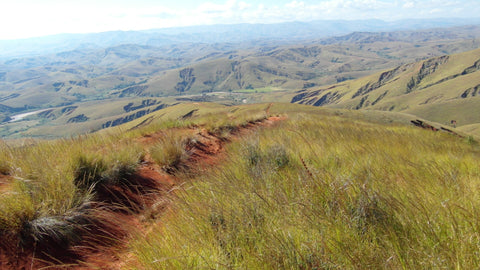
North of Ankazobé we left the asphalt road and followed a still relatively good dirt road that leads to a small nature reserve, but after that it became much more difficult on the treeless plateau, which was shaped by 
deep gullies and tall grass. But after a few kilometers it was over, nothing 
walked more, the comfortable part was over. The car had to turn, return with an agreement to pick us up again.
In the evening we reached a small settlement with four houses, in which the boss of the area lived. His approval was necessary 
that we were allowed to move around in the local area. We were also received extremely friendly, certainly with the help of Gabriel, because
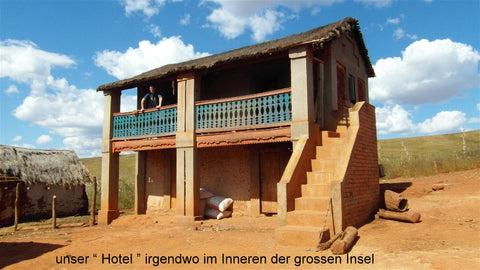
the good people didn't speak French and unfortunately we didn't speak Malgache. We got a small room in the best house (that belonged to the boss) and were also fed by the family (rice, the Malagasy staple with chicken), 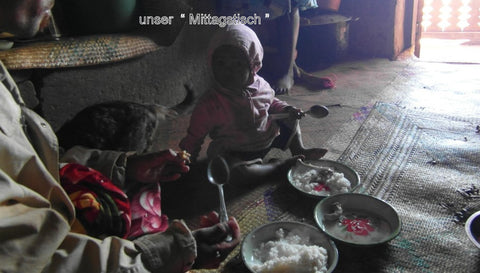
lack of furniture, the food was on the floor, why not.
We then spent the next few days in the field. My intention to hike to this area had been the idea of prospecting for a deposit of rare earths and checking whether it was worth mining. However, it soon turned out that 
although there were many deposits, they were too small and too scattered to justify commercial exploitation. Almost all of these pegmatites (belonging to the beryl-columbite pegmatites) were cut through the ubiquitous erosion channels.  This area is not famous for its rare earth minerals, but for its outstanding topazes, aquamarines and heliodors. Excellent Thortveiti crystals were also found in one of the Pegamtites (Befanamo). It was clear to us that
This area is not famous for its rare earth minerals, but for its outstanding topazes, aquamarines and heliodors. Excellent Thortveiti crystals were also found in one of the Pegamtites (Befanamo). It was clear to us that 
magnificent crystals of aquamarine cannot be found or purchased locally. We were already thinking of good crystals of monazite or struverite. After long walks we gradually reached always 
more outcrops, but offered few interesting minerals. As M.Gabriel informed us, as always, a lot of perseverance and work is necessary to get to the rare ores, which are nested in feldspar 

appear. We made our measurements and tried to get the dimensions of the pegmatite, but found no good minerals apart from some common beryl and feldspar. the 
The minerals shown in the photos were brought to us by Monsieur Gabriel, who has been prospecting in this area for a long time. It's like most things in Africa: there is hardly anyone on site 
to find something (even if it takes a lot of work and time). However, for me as a geologist, it is always fascinating to get to know the deposits personally and above all 
to get in touch with the people who work there. And of course, such a multi-day excursion is on foot 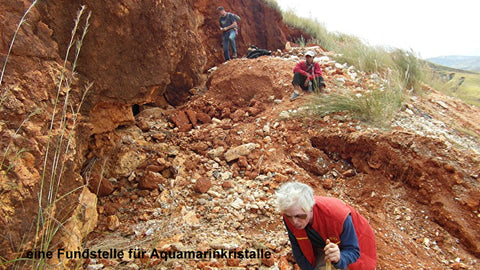
something different in Madagascar than rushing from exposure to exposure by car. Certainly the original goal, a deposit for the extraction of rare earths, was missed as a profit 
we could record a little adventure and also a deeper insight into the life of the Malagasy far from civilization, without electricity, without machines, without mobile phones. So we could see how heavy loads with oxen through the difficult 
Terrain to be moved. Above all, the overwhelming hospitality of the simple people should be mentioned, who accepted us into their lives as a matter of course, without making any demands right away. In the afternoon and in the evening, when we returned from our marches, we could watch the rice 
was harvested and threshed, how after dark (shortly after 6:00 p.m.) life came to rest because there was no light. Even if it wasn't a success in terms of the mineralogical yield, in retrospect it's one of mine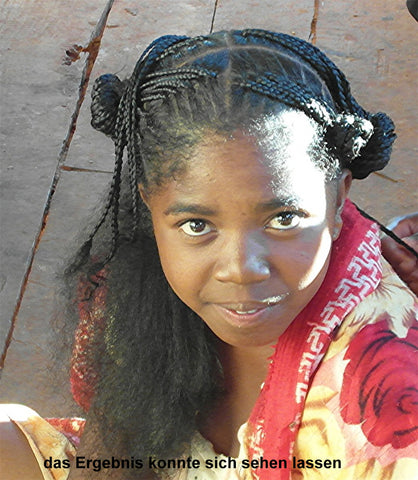 most beautiful excursions and perhaps, dear reader, you can empathize a bit when you look at the pictures. My deepest thanks go to the family in the small hamlet and to Mr. Gabriel, who is still one of my good friends in Madagascar.
most beautiful excursions and perhaps, dear reader, you can empathize a bit when you look at the pictures. My deepest thanks go to the family in the small hamlet and to Mr. Gabriel, who is still one of my good friends in Madagascar.







 This area is not famous for its rare earth minerals, but for its outstanding topazes, aquamarines and heliodors. Excellent Thortveiti crystals were also found in one of the Pegamtites (Befanamo). It was clear to us that
This area is not famous for its rare earth minerals, but for its outstanding topazes, aquamarines and heliodors. Excellent Thortveiti crystals were also found in one of the Pegamtites (Befanamo). It was clear to us that 










 most beautiful excursions and perhaps, dear reader, you can empathize a bit when you look at the pictures. My deepest thanks go to the family in the small hamlet and to Mr. Gabriel, who is still one of my good friends in Madagascar.
most beautiful excursions and perhaps, dear reader, you can empathize a bit when you look at the pictures. My deepest thanks go to the family in the small hamlet and to Mr. Gabriel, who is still one of my good friends in Madagascar.